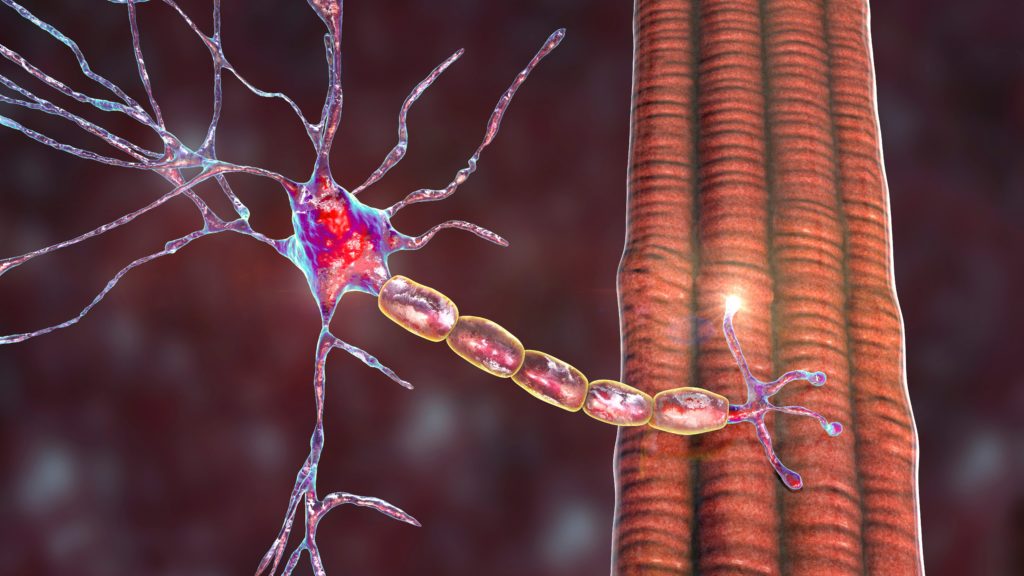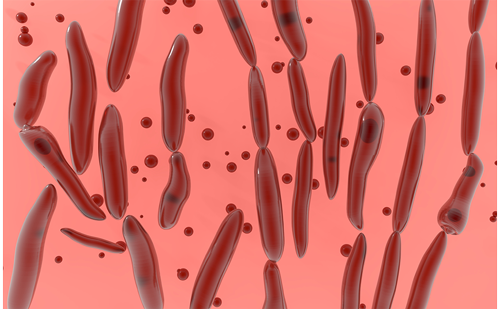Minocycline is a semi-synthetic tetracycline derivative that has been in clinical use for more than 30 years.The drug, which has broad-spectrum antimicrobial activity, is commonly used for the long-term treatment of chronic conditions such as acne vulgaris and rosacea at doses of 100–200mg/day.1 Drug-induced autoimmune syndromes have been reported rarely,2 in the order of one per million individuals treated.3 Minocycline therefore has an established record of clinical safety with long-term administration. Its small size (496kDa) and high lipophilicity confer advantageous bioavailability and blood–brain barrier permeability.4,5 Its cerebrospinal fluid (CSF) penetration surpasses that of other tetracyclines.6,7
Minocycline exerts anti-inflammatory effects separate and distinct from its antibiotic activity.8–11 Neurological interest in minocycline was piqued by its effects in the setting of non-infectious injury, specifically by the finding that the drug reduced neuronal loss after hypoxic injury.12 In animal models of ischemia, final infarct volume was reduced both with acute administration and with drug delivery up to four hours after ischemic onset.13 Subsequent work confirmed minocycline’s neuroprotective effect in several models of acute and chronic neurodegeneration, including hemorrhagic and ischemic stroke,14–16 spinal cord injury,17–19 traumatic brain injury,20 multiple sclerosis,21–27 Parkinson’s disease (PD),25–28 Huntington’s disease (HD),29–31 ALS,32–34 and epilepsy.35 Contrary to numerous reports of the potential benefits of minocycline in neurological disease is data suggesting that the drug may have no effect, 7,36 or may even exacerbate disease in models of HD, PD, and stroke.37–39 On balance, pre-clinical evidence favoring the neuroprotective potential of minocycline, in combination with its excellent central nervous system (CNS) penetration and wellestablished clinical safety, make the drug a viable candidate therapy for ALS and other neurodegenerative diseases.Whether minocycline will prove effective against neurodegeneration in humans is not yet known. Jankovic and colleagues at Baylor University are currently using 200mg/day of minocycline in an on-going study of 30 patients with HD whom they will follow for three years; Cudkowicz and colleagues at Harvard also have an HD trial underway.40 Minocycline is under consideration for phase III testing in PD based on encouraging results of a recent phase II futility trial.41 The first large efficacy trial of minocycline in humans is currently being conducted in patients with ALS.40
Definition of Therapeutic Targets
How minocycline protects neurons remains unclear. Experimental findings implicate two major mechanisms. Minocycline potently inhibits microglial activation, thereby inhibiting microglial release of several toxic pro-inflammatory molecules and potentially diminishing bystander injury to neurons. Minocycline also interacts with apoptotic machinery to inhibit cell death. Microglial activation and apoptosis are features potentially common to all neuro-degenerative disease states. Minocycline may therefore be beneficial in a broad spectrum of disease models because it antagonizes common pathways of neurodegeneration.
Innate Immune Modulation
Yrjanheikki and colleagues first demonstrated that minocycline prevents microglial activation in a model of forebrain ischemia.12 Inhibition of microglial activation by minocycline has subsequently been reported in models of PD,26 multiple sclerosis (MS),22 intracerebral hemorrhage,42 and spinal-cord injury.18 At doses ranging from 45mg/kg intraperitoneally (ip) to 1g/kg orally (po), minocycline inhibits morphologic activation of microglia by CD11b, MAC-2, and isolectine-B4 staining.27,33,43 Treatment with minocycline also downregulates the expression of several molecules associated with microglial activation, including caspase 1 (interleukin-1ß-converting enzyme) and inducible nitric oxide synthase (iNOS),12,13,25,29 and inhibits the activity of cyclooxygenase 2 (COX2) and prostaglandin E2 (PGE2).12,44
In mixed neuronal–microglial cultures, activation of microglia augmented excitotoxic injury from glutamate and kainite; however, this effect was abrogated by minocycline.45 The immunomodulating effects of minocycline on microglia appear to be cell specific, given that minocycline directly inhibits the proliferation and the activation of microglia in purified cultures.44,45 A potential additional benefit of minocycline relates to its ability to enhance neuroregeneration in the setting of injury. Microglial activation has been shown to inhibit hippocampal neurogenesis in animals, a defect that is corrected by minocycline administration.46 Relevance to ALS
Activation of microglia, the resident innate immune cells of the CNS, occurs in virtually all diseases of the CNS and was an early observation by 19th and early 20th century histologists. The presence of activated microglia is a histological feature of ALS and murine disease.47,48 In mice, microglial activation precedes clinical weakness and motor neuron loss,49 and chronic stimulation of innate CNS immunity exacerbates motor neuron disease (MND).50 Activated microglia elaborate several potentially neurotoxic molecules, including reactive oxygen and nitrogen species, proteases, and pro-inflammatory cytokines that amplify inflammation. The profile of inflammatory cytokines and enzymes upregulated in the spinal cord or CSF of ALS patients (IL-6, IL-1ß,COX2, and PGE2)51–53 and in the spinal cord of mice with MND (IL-1ß, TNF?, COX2, PGE2)54 tends to implicate microglial involvement. Microglia conditioned by CSF from ALS patients act to increase the vulnerability of cultured neurons to glutamate toxicity, an effect blocked by minocycline.45 In the mouse model of ALS, minocycline delays symptom onset and slows disease progression.13,33,55,56 Additionally, minocycline demonstrates additive beneficial effects in drug-cocktails when administered with creatine 57 or riluzole and the calcium-channel antagonist nimodipine.58
Inhibition of Apoptosis
Minocycline has been shown to diminish apoptosis in CNS cells subjected to experimental injury.18,19 Minocycline acts at the mitochondria to stabilize mitochondrial membranes and inhibit the release of cytochrome C into the cytosol,56,59 thereby diminishing cytochrome C-mediated stimulation of caspases 3 and 9. Mitochondrial membrane stabilization by minocycline also inhibits the release of apoptogenic factors such as caspase-independent apoptosis inducing factor (AIF) and the caspase-dependent second mitochondriaderived activator of caspase (Smac)/direct IAP-binding protein with low pI (DIABLO).30,59 Minocycline upregulates the anti-apoptotic factor Bcl-2, which antagonizes pro-apoptotic Bcl-2 family members Bax, Bak, and Bid.60 Additionally, minocycline reduces cleavage and activation of Bid,30 preventing downstream activation of caspase 3, 8, and 9. Minocycline therefore antagonizes both caspase-dependent and caspase-independent cell death pathways in experimental systems.
Relevance to ALS
An increasing body of evidence suggests that the final cell death pathway for motor neurons in ALS is apoptotic. Studies of human post-mortem tissue demonstrate terminal deoxyuridine triphosphate (dUTP) nick end labeling (TUNEL)-positive degenerating motor neurons,61,62 increased levels of apoptosis related molecules,63 significantly increased levels of caspase 1 and 3 activity in spinal cord,61 and altered balance between pro- and anti-apoptotic regulatory proteins favoring apoptosis.64 Cellular disease models suggest that affected motor neurons are more likely to undergo apoptosis under conditions of oxidative stress.65
In a mouse model of ALS, caspase 1 and caspase 3 expression is increased in the spinal cord of symptomatic mice, and the balance of Bcl-2 protein family members shifts in a direction favoring apoptosis.66,67 The therapeutic potential of apoptotic inhibitors is underscored by neuroprotective effects of genetic manipulations in transgenic mice to overexpress anti-apoptotic molecules,68 exposure to caspase inhibitors in cellular models,69 and intraventricular administration of a broad-spectrum caspase inhibitor, which demonstrated that chronic caspase inhibition can significantly prolong survival in mice with MND.66 Minocycline is one of the two compounds with antiapoptotic effects currently in clinical trials in ALS patients. A second compound, ritonavir, inhibits apoptosis in the setting of oxidative injury70 and is being tried in combination with hydroxyurea in patients with ALS by researchers at the University of California, San Francisco (UCSF).
Potential for Treating MND in Humans
Feasibility and efficacy trials in rheumatoid arthritis (RA),71,72 acne,73 HD,74 77 and ALS78,79 demonstrate that long-term treatment with minocycline up to 200mg/day is safe and well tolerated. Minocycline was also well tolerated in a small pilot study in patients with MS.80
Minocycline exhibits pre-clinical promise for chronic debilitating conditions for which treatment is largely symptomatic, such as PD, and for lethal disorders that currently lack effective treatments, including HD and ALS. ALS affects approximately 1/100,000 adults. Rilutek, the only currently FDA-approved treatment, extends survival by up to three months; there is therefore a clear need for more effective therapies.The development of an effective neuroprotective agent that is safe with long-term administration would radically advance ALS therapeutics, and could potentially have a significant impact on the broader class of neurodegenerative disease. Clinical Trials of Minocycline in Patients with Neurologic Disease
Two open-label phase I trials of minocycline in HD have been completed. Bonelli and colleagues reported that minocycline, administered at 100mg/day for six months, was well tolerated and safe in 14 patients.75 Subsequently, Thomas and colleagues replicated these findings in 30 patients with HD treated for six months with 200mg/day of minocycline.77 A randomized, placebocontrolled study of 60 patients with HD found that minocycline (100mg or 200mg/day) given for eight weeks was well tolerated, with similar rates of adverse events between treatment and placebo groups and colleagues also conducted a pilot efficacy study in 14 HD patients given 100mg/day over 24 months.76 Preliminary findings from this work suggest that minocycline was well tolerated with chronic administration and stabilized motor and neuropsychiatric function in HD patients after two years.
In ALS, two randomized placebo-controlled tolerability trials of minocycline have been completed and published jointly.78 In one trial, 19 patients received 200mg daily or placebo for six months with no significant increase in adverse events over placebo. All patients were taking rilutek. In a second trial, 23 patients were given up to 400mg daily in an eightmonth cross-over trial (four months on the drug).The mean tolerated dose was 387mg daily. At higher doses, there was a trend toward more gastrointestinal (GI) adverse events and blood urea nitrogen and liver enzymes became elevated. Additionally, a randomized pilot study evaluated the safety of minocycline in combination with rilutek.79 Twenty ALS patients were randomized and given either rilutek (50mg twice-a-day (bid)) or rilutek and minocycline (100mg intradermally (id)) for six months. No significant increase in adverse events occurred with combined treatment.
In PD, a randomized placebo-controlled phase II futility trial has been completed.41 Two hundred patients were randomized to receive 200mg/day of minocycline or 10g/day of creatine, or placebo. The futility threshold for the trial was set at 30% reduction in symptom progression, assessed by a standardized rating scale. Minocycline was not rejected under the futility criteria set, and exhibited good tolerability.
Efficacy data are not yet available on minocycline in ALS. With the completion of on-going trials in patients with ALS and PD, an assessment of the neuroprotective potential of minocycline in humans will be closer to hand. How exactly to measure neuroprotection in ALS is far from clear. Until surrogate markers of neuroprotection and neurodegeneration in ALS are developed and validated, clinical trials will continue to use standard endpoints, such as survival, measurement of breathing capacity, and standardized functional rating scales. On the one hand, it is not clear that these end-points reliably reflect pathophysiologic disease state. On the other hand, if the neuroprotective effect minocycline is too small to impact survival or rate of decline in respiratory function in ALS patients, then it would be reasonable to say that the drug is futile for ALS treatment.
Minocycline Compared with Other Candidate Therapies for MND
Minocycline is unique among drugs in current clinical testing for ALS on a number of counts. Its long clinical use in other acute and chronic disorders furnishes a great deal of human tolerability and safety data, establishing that the compound has low toxicity when administered up to nine months. No other compound in clinical testing has a comparable amount of prior human experience. Minocycline is the only known compound that can inhibit both caspase-dependent and -independent apoptosis. It is also one of the few drugs known to directly inhibit microglial activation. Minocycline therefore acts in unique ways on two major pathways of neuronal injury of relevance to ALS. No other compound in current clinical testing targets these same pathways. The proposed mechanisms of action of minocycline do not overlap with rilutek, an anti-glutamate agent, and pre-clinical studies suggest beneficial synergy between the compounds. Finally, the relatively low cost of the compound suggests that, were it effective in ALS, it would be affordable by all patients regardless of income or insurance status.













